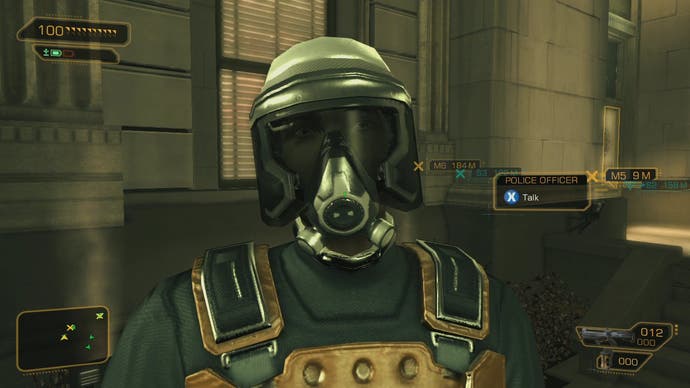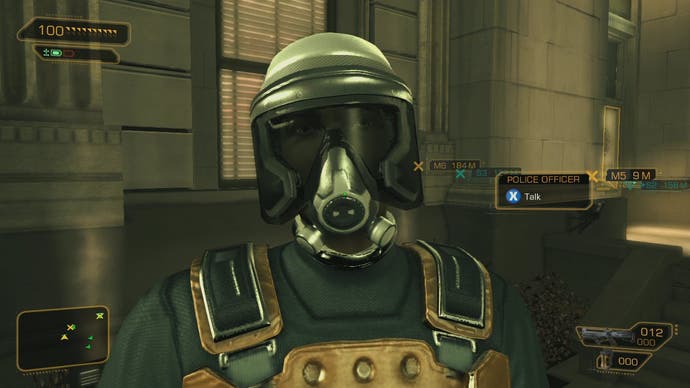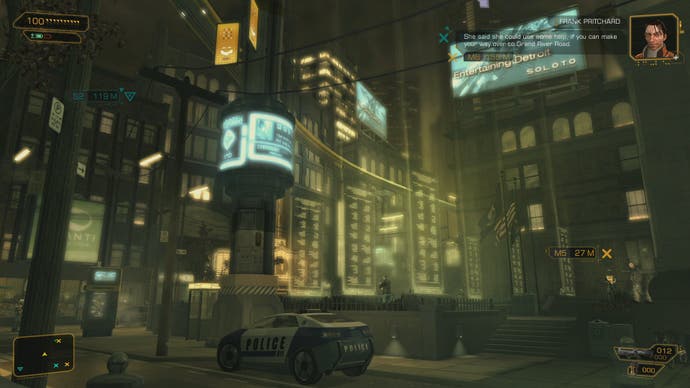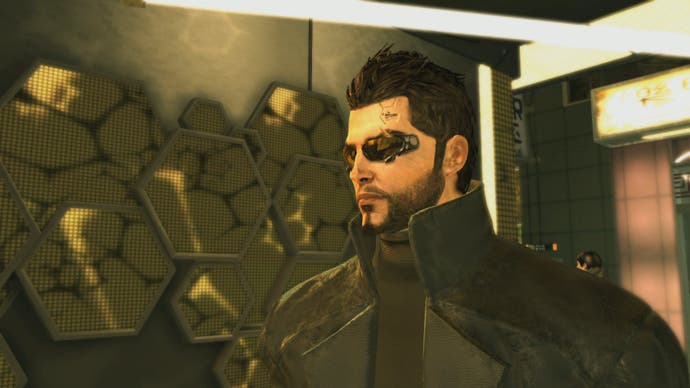Face-Off: Deus Ex: Human Revolution
The truth will change SKU.
On the cheap and cheerful end of the scale, Human Revolution supports Edge AA, which seeks out obvious jaggies and blurs them. Following on from this, we have NVIDIA's FXAA in three different flavours (low, medium and high quality), which minimises sub-pixel artifacting and popping issues and has a good stab at smoothing jaggies. The final option is an implementation of the edge-seeking/smoothing MLAA - the technique we're seeing becoming quite widespread on PlayStation 3, but here presented via what we suspect is a GPU-driven implementation.
In this video you get to see how all of them compare to the original image running with no anti-aliasing at all (another option the PC has if you really want it). As you can see, the differences are quite stark. The Edge AA implementation really is quite poor and just goes to demonstrate just how far post-process anti-aliasing has progressed in the last 12 to 18 months. The low-quality FXAA options seems to have much in common with the console versions, while the medium and higher quality versions arguably sit better with the game's visual style. MLAA looks fine, but up against FXAA High in particular, post-process artifacting does seem to be more noticeable. The "No AA" footage also demonstrates quite conclusively that Eidos Montreal made the right call in going for post-process anti-aliasing rather than leaving it as is.
On top of the improved lighting and more refined anti-aliasing, there's DirectX 11 support, manifesting most obviously in the form of subtle tessellation that removes the jagged polygon edges from objects when they're viewed close up. The somewhat overbearing ambient occlusion is also applied very differently on PC and is far less "obvious" than it is on both 360 and PS3, while shadows can either be turned off completely for lower-end systems or upgraded to more visually pleasing soft shadows if you have the requisite horsepower. Depth of field has been improved too (and it's really pretty decent on console as it stands) while field of view can also be adjusted. NVIDIA 3D Vision support is in too, plus work has been done on optimising the game for AMD's multi-screen EyeFinity technology too.
All of this combines to ensure that Human Revolution scales up very nicely when operating above the console standard 720p and in the various niche display modes. While we're unsure that the core assets are much improved over the standard console versions, texture quality is generally very good, and even when running in a very high resolution, it's rare that you can come across a glaringly obvious low-res object. Over and above the visuals, another tangible bonus the PC version of Deus Ex offers by default is much faster loading times. They're still fairly long by PC standards, but compared to the console versions the time difference is frankly phenomenal and a welcome 'upgrade'.


Also intriguing is that the US version of Deus Ex includes a coupon to play the game in its entirety via OnLive. This is something we've not had the opportunity to check out, but we can easily imagine that the game would work quite nicely on the system.
OnLive's video compression fares fairly well on relatively slow-moving footage and muted colour schemes (Batman: Arkham Asylum is another example) and for basic traversal and conversations, Deus Ex is likely to be a really good match for the architecture. That said, precision movement (e.g. lining up headshots) may feel rather clumsy owing to the increased latency - something we noticed on a recent playtest of Red Faction: Armageddon.
We wouldn't be surprised at all to learn that OnLive paid for the privilege of promoting their system in partnership with the biggest game of the summer, and it's a very canny marketing move. The notion of cherry-picking AAA games that work well on your system is a really good idea: as the end-user is effectively getting a full game trial of the system at no cost, everyone's a winner. We hope to revisit OnLive soon, closer to the UK release date, but based on our recent playtest it remains the case that some games are more suited to the system than others.


Returning to the topic at hand, the main takeaway from this piece is uniformly good news for all concerned: the two console versions are essentially identical, with just deeper gamma and some minor, additional blur differentiating the 360 release from the PS3 version which looks cleaner but seems to feature less effective anti-aliasing. From a performance and gameplay perspective, the two SKUs are mostly identical. In fact, the two console versions are perhaps too much of a match - we would have really liked the blurry, grainy FMVs to be improved for the PS3 where disc space is plentiful. The notion of low-quality FMVs on PC titles continues to rankle - why not offer higher-quality 1080p versions as downloads if publishers are having trouble crunching everything onto DVD?
These are small gripes, however, because the core experience of Human Revolution is simply magnificent - a solid 9/10, no matter which platform you own.








